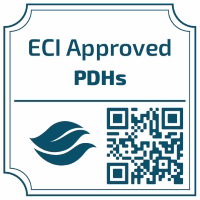Back
Claim Credit Verification Code: 2035
One (1) Hour Workshop
Stormwater Management
Considering Carbon in Stormwater Infrastructure
Friday, February 28, 2025
9:40 AM – 10:40 AM ET
Location: E11C
CE: 1 PDH
Level of Presentation: Intermediate

Sonja M. Hartmann, PE, WEDG, ENV SP (she/her/hers)
Civil Engineer
Arup
New York, New York, United States
Presenter(s)
Sustainability in stormwater design is often discussed in terms of reducing combined sewer overflows, implementing rainwater harvesting, and restoring natural systems. In many other forms of infrastructure, such as energy and transportation, the present-day sustainability conversation is centered on decarbonization. This session aims to bridge this gap and equip designers, developers, and product vendors to better understand how to understand, quantify, and reduce carbon in stormwater infrastructure.
Join this workshop to learn key carbon terminology in the context of stormwater infrastructure, recognize strategies to reduce carbon footprints in the design, construction, and maintenance of stormwater infrastructure, and walk away with an understanding of how to avoid "greenwashing" so we can collectively move our industry toward a brighter climate future.
Full Abstract: The global climate emergency demands an overhaul of business-as-usual practices. The design and construction industry has exciting momentum toward more holistic, intentional, and sustainable approaches in the future than those that have been implemented in the past, with nature-based solutions chief among them. However, getting there requires up-skilling ourselves as individuals to be able to approach conversations around sustainability with confidence, intelligence, and a critical lens. In stormwater infrastructure, sustainability is often discussed in terms of reducing combined sewer overflows, implementing rainwater harvesting, and restoring natural systems. In many other forms of infrastructure, such as energy and transportation, the present-day sustainability conversation is centered on decarbonization. This session aims to bridge this gap and equip designers, developers, and product vendors to better understand how to understand, quantify, and reduce carbon in stormwater infrastructure.
We will start by discussing nature-based solutions and highlighting the variety of co-benefits they offer that reach far beyond their infrastructural purposes alone. Urban green infrastructure is one such example that enables street beautification, heat island mitigation, and biodiversity improvement on top of its core stormwater management function. Another critical co-benefit green infrastructure can offer is a lower carbon footprint than traditional grey infrastructure - but how do we actually talk about this in concrete terms in our design and planning work? We will use this as a segway to dive into and demystify the hot topic of decarbonizing infrastructure.
We will define carbon terminology in the context of stormwater infrastructure, focused specifically on embodied, sequestered, and operational carbon. We will introduce key concepts to understand how carbon is quantified and reported, covering topics including Global Warming Potential (GWP) and Environmental Product Declarations (EPDs). Then, we will highlight several strategies to reduce carbon in green and grey stormwater infrastructure, such as by maximizing substrate sequestration and minimizing cement content. Finally, we will close with a list of key considerations that can help professionals understand the current state of the industry and approach decarbonization with a productive, critical lens.
The session will aim to engage the audience through polls to gauge interests and initial familiarity with the topics discussed in the presentation. We will give participants a chance to interact with their neighbors to build familiarity and confidence with the concepts introduced during the session. Attendees will leave with new knowledge and actionable ideas regarding how to consider, discuss, and reduce carbon in stormwater management infrastructure.
Join this workshop to learn key carbon terminology in the context of stormwater infrastructure, recognize strategies to reduce carbon footprints in the design, construction, and maintenance of stormwater infrastructure, and walk away with an understanding of how to avoid "greenwashing" so we can collectively move our industry toward a brighter climate future.
Full Abstract: The global climate emergency demands an overhaul of business-as-usual practices. The design and construction industry has exciting momentum toward more holistic, intentional, and sustainable approaches in the future than those that have been implemented in the past, with nature-based solutions chief among them. However, getting there requires up-skilling ourselves as individuals to be able to approach conversations around sustainability with confidence, intelligence, and a critical lens. In stormwater infrastructure, sustainability is often discussed in terms of reducing combined sewer overflows, implementing rainwater harvesting, and restoring natural systems. In many other forms of infrastructure, such as energy and transportation, the present-day sustainability conversation is centered on decarbonization. This session aims to bridge this gap and equip designers, developers, and product vendors to better understand how to understand, quantify, and reduce carbon in stormwater infrastructure.
We will start by discussing nature-based solutions and highlighting the variety of co-benefits they offer that reach far beyond their infrastructural purposes alone. Urban green infrastructure is one such example that enables street beautification, heat island mitigation, and biodiversity improvement on top of its core stormwater management function. Another critical co-benefit green infrastructure can offer is a lower carbon footprint than traditional grey infrastructure - but how do we actually talk about this in concrete terms in our design and planning work? We will use this as a segway to dive into and demystify the hot topic of decarbonizing infrastructure.
We will define carbon terminology in the context of stormwater infrastructure, focused specifically on embodied, sequestered, and operational carbon. We will introduce key concepts to understand how carbon is quantified and reported, covering topics including Global Warming Potential (GWP) and Environmental Product Declarations (EPDs). Then, we will highlight several strategies to reduce carbon in green and grey stormwater infrastructure, such as by maximizing substrate sequestration and minimizing cement content. Finally, we will close with a list of key considerations that can help professionals understand the current state of the industry and approach decarbonization with a productive, critical lens.
The session will aim to engage the audience through polls to gauge interests and initial familiarity with the topics discussed in the presentation. We will give participants a chance to interact with their neighbors to build familiarity and confidence with the concepts introduced during the session. Attendees will leave with new knowledge and actionable ideas regarding how to consider, discuss, and reduce carbon in stormwater management infrastructure.
Learning Objectives:
At the conclusion of this presentation, attendees will:
- Define key carbon terminology (embodied/sequestered/operational carbon, life cycle assessment, global warming potential, environmental product declaration).
- Identify opportunities to apply low-carbon principles in design and planning work.
- Describe the complexity of comparing carbon footprints between infrastructure assets to be able to participate in and lead informed discussions.

.jpg)


